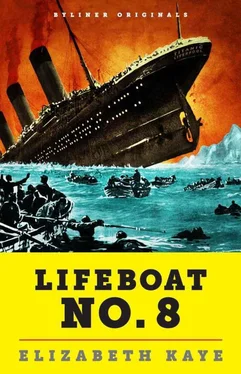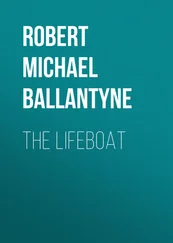So it was, at ten o’clock on Sunday evening, when stewards appeared with silver trays of biscuits and coffee, and Roberta bade him goodnight, that the man begged her to stay. “Please don’t go,” he said. “Something awful is about to happen.”
But Roberta was far too happy to entertain dark thoughts. Since boarding the ship four days ago, she had become smitten with someone else.
Roberta never revealed who this man was, but she left several clues that point to Jack Phillips, the Titanic ’s chief wireless operator. Jack hailed from Godalming, Surrey, a hamlet near where Roberta was raised. In his boyhood, he lived with his parents and sisters above the shop on Farncombe Street where his father sold cloth and sewing materials. He finished school at fifteen and began training to be a wireless operator, completing his education four years later at the newly established Marconi Company’s training school at Seaforth Barracks, just north of Liverpool. There, the big ships coming and going in the harbor were dazzling avatars of adventure and romance. Upon his graduation in 1906, having displayed the qualities Mr. Marconi required—skill, character, and fitness—he boarded the White Star liner Teutonic as an operator. He was working on his favorite ship, the White Star Line’s Oceanic —a two-funnel liner that had once been the largest in the world—when he received orders to report to the Titanic. He turned twenty-five on the second day of the voyage.
Jack cut a dashing figure in his dark suit with eight gold buttons, high collar, and tie. He had a full face and dark eyes that seemed to gaze into the near distance; his profession required him to be alert, unemotional, and concise, but his eyes were the eyes of a dreamer.
On Sunday, April 14, he was besieged, though not because of the six messages from nearby ships warning of an ice field ahead. The trouble came from first-class passengers for whom the wireless was a delightfully new and intriguing toy. They wrote reams of messages to family and friends—mostly along the edifying lines of “How are you? Good voyage”—and Jack had to send them, since they were paying for the service. That April day, there were so many messages that the wireless set broke down.
It took Jack many hours to repair it. At 11 p.m. he was, by his own account, “all done in” and still working his way through his overstuffed inbox. The wireless was a frustrating, unreliable instrument, hobbled by weak signals and inadequate range. It was difficult to get a connection, and that night, just as he finally contacted Cape Race, the liner Californian broke in. “Say old man,” the message read, “We are stopped and surrounded by ice.” It was the seventh ice warning Jack had received that day. Exasperated and exhausted, his reply to the Californian was swift and sharp. “Shut up shut up,” he tapped out. “We are busy.”
Fifty-five minutes later, Captain Edward Smith entered the wireless shack. “We’ve struck an iceberg,” he told Jack. “I’m having an inspection made to see what it has done to us. You better get ready to send a distress call. But don’t send it until I tell you.”
Just after midnight, Caroline Bonnell and Natalie Wick, choosing adventure over the warmth of their cabin, put heavy wraps over their nightgowns and went up to the Boat Deck. They were so excited that they failed to notice the piercingly chill air. “Well, thank goodness, Natalie,” said Caroline, “we are going to see our iceberg at last!”
But there wasn’t a berg or an ice floe in sight. Nor was there a trace of wind, though there were more stars in the deep purple, moonless sky than either had ever seen. They stood at the starboard rail, mesmerized by how near those stars appeared to be and by the silvery reflections they cast in the infinite sea that stretched before them, as smooth and unmoving as glass.
The Countess of Rothes and Gladys Cherry entered the A Deck foyer at the foot of the Grand Staircase, where, on the landing, a clock framed by intricate oak carvings of two nymphs was meant to depict “Honour and Glory Crowning Time.”
The staircase, with its majestic balustrades and etched glass dome, was the Titanic ’s ultimate signifier; like the ship herself, its very existence embodied man’s ambition, prowess, and progress in the Gilded Age. As word of the iceberg spread, it was the logical gathering place for first-class gentlemen sporting heavy frock coats and woolen mufflers, and ladies in floor-length sable coats hastily donned over satin nightgowns and silk chiffon evening dresses trimmed in gold bullion lace.
Among them were Maria and Victor Peñasco y Castellana, a handsome couple in their early twenties who had recently been married in their native Madrid and were fresh from a Parisian honeymoon. Victor’s mother was convinced the Titanic was doomed and had pleaded with them not to sail on her, but they were so taken with the inherent romance of the ship that they secretly booked passage. Now they stood close together, away from the others, holding hands.
Everyone fell silent when Captain Smith strode through the foyer, accompanied by Thomas Andrews, the ship’s builder. The Captain and Andrews were proud, purposeful men known to be warm and reassuring. They had the explicit trust of their now confused passengers, who scanned their faces for a hint, a clarifying sign. Both men, having made their inspection, knew that the ship was fatally wounded. But their expressions revealed nothing.
Moments later, the Captain reappeared in the wireless shack. “You had better get assistance,” he said.
“Do you want me to use a distress call?” Jack asked.
“Yes, at once,” said the Captain. He handed Jack a piece of paper on which he had scrawled the ship’s position.
Then he hastened to the deck, where he gave his officers the order to uncover the lifeboats and muster the passengers.
In the A Deck foyer, the Countess encountered her friend Fletcher Fellows Lambert-Williams, a convivial gentleman who, earlier that evening, had overheard Captain Smith telling several passengers that the ship could be cut crosswise in three places and each piece would float.
“There is nothing to worry about,” he told the Countess. “The watertight compartments must surely hold.”
Just then an officer hurried by. “Will you all get your life belts on!” he called out. “Dress warmly and come up to Boat Deck!”
The Countess looked at Gladys. She did not speak, but she could see that her cousin was as stunned as she was.
The Countess of Rothes had been born into an upper-class life replete with all the grandeur it avails: the privileged girlhood culminating in a union with a dapper earl who presided over a thirty-seven-bedroom family estate centered on ten thousand acres of land, and who lacked for nothing other than the funds she could readily provide; the posh wedding, in the spring of 1900, at which she appeared as a vision in white satin, a crown of orange blossoms and a veil of priceless sixteenth-century Brussels lace; her presentation as a bride at Buckingham Palace, where she caught the ever-traveling eye of the Prince of Wales, who would soon become King Edward VII; the good works as the loyal patron of several charities; and the two beloved sons—the heir and the spare—to carry the line forward.
It was a glamorous and satisfying life. In the Edwardian aristocracy, where marriage and love were often unrelated, the Earl and the Countess were a rarity: a husband and wife so fond of each other that they were derided as “a most unfashionably devoted couple.”
Now the Countess was journeying on the Titanic to join her husband, who planned to purchase and operate an orange grove in California. Five days before, on the morning of the sailing, she had been sought out by a reporter, who asked how she felt about leaving London society for a fruit farm. Now, as she returned to her cabin to don her life belt, the Countess was rueful as she recalled her reply. “I am full of joyful expectation,” she had said.
Читать дальше












